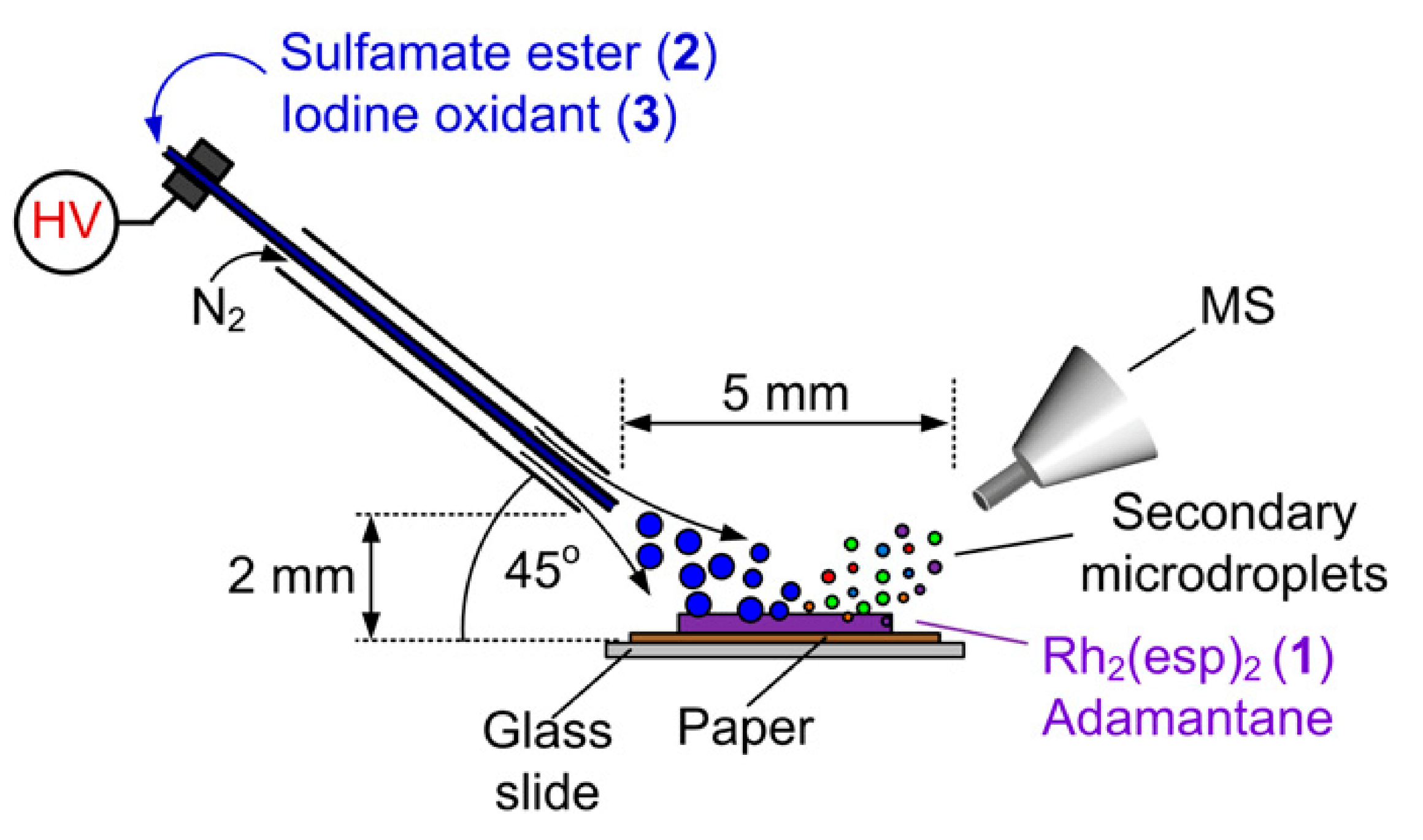Capturing fleeting intermediates in a catalytic C–H amination reaction cycle
Perry, R. H., Cahill III, T. J., Roizen, J. L., Du Bois, J., Zare, R. N.
Proc. Nat. Acad. Sci.,
2012, 18295-18299; 10.1073/pnas.1207600109

09/2012
A collaborative project between the Du Bois and Zare groups, both at Stanford University, has developed a novel method that allows un-precedented insights into the C-H amination catalytic cycle. Application of Desorption Electrospray Ionization MS (DESI-MS), an ambient ionization technique has allowed the identification of transient reactive species in an archetypal C-H amination reaction.
The findings suggest that the Rh-nitrene complex can react with C-H bonds through a hydrogen atom abstraction pathway. This raises the intriguing possibiliy that two catalytic C-H amination pathways may be operative in a typical bulk solution reaction.
The implications of these investigations are far reaching for the CCHF. Not only are these findings expected to inform and guide the future design of rhdoium catalysts for C-H amination, but they also highlight the power of this analytical technique for extensive catalytic cycle investigation. With the many catalysts present in the CCHF such a powerful technique with have obvious value.